How to choose the best front door to make the most of your period home
Well-considered period front door ideas will help you to create a valuable first impression and can transform the appearance of your property
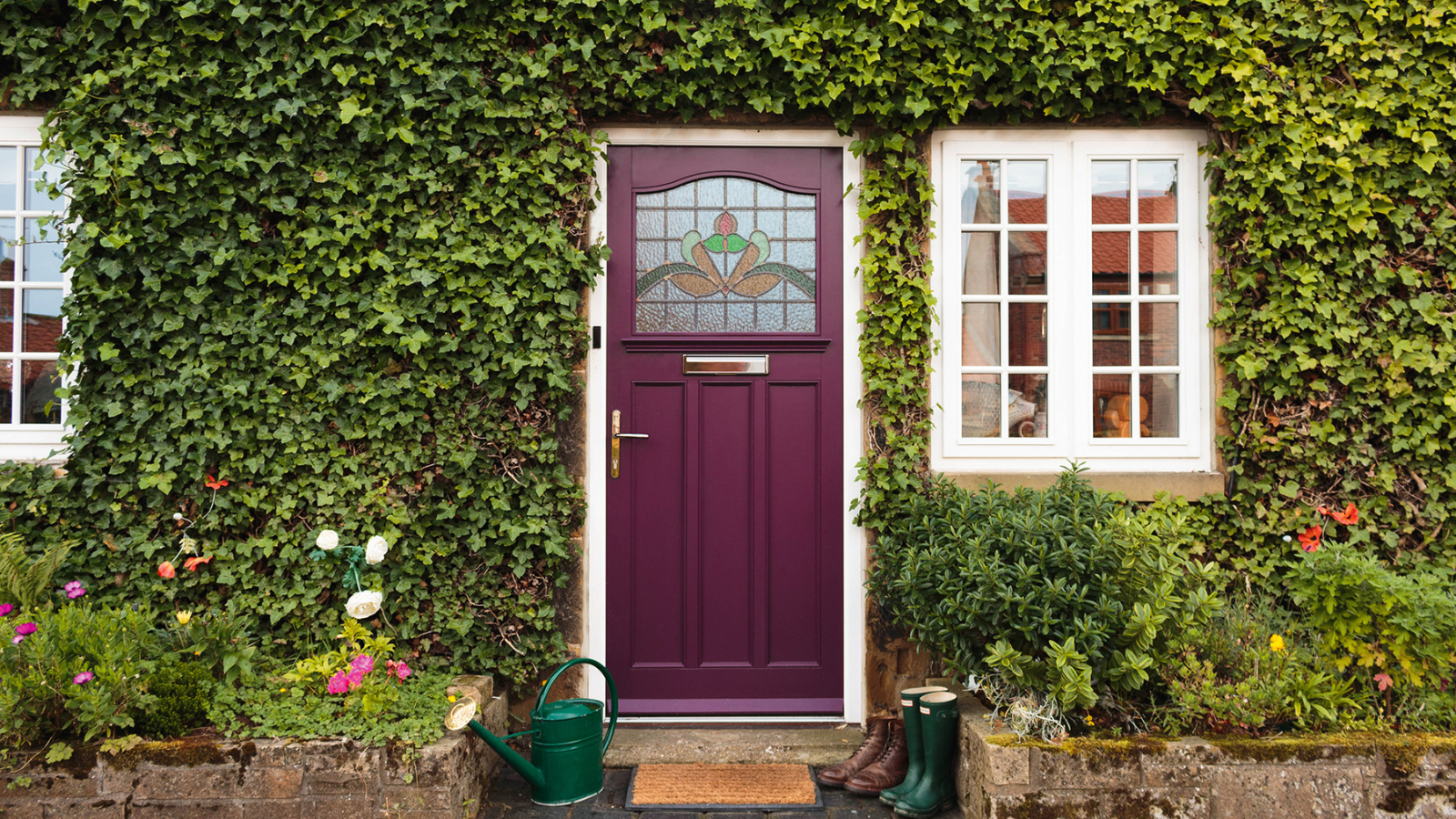
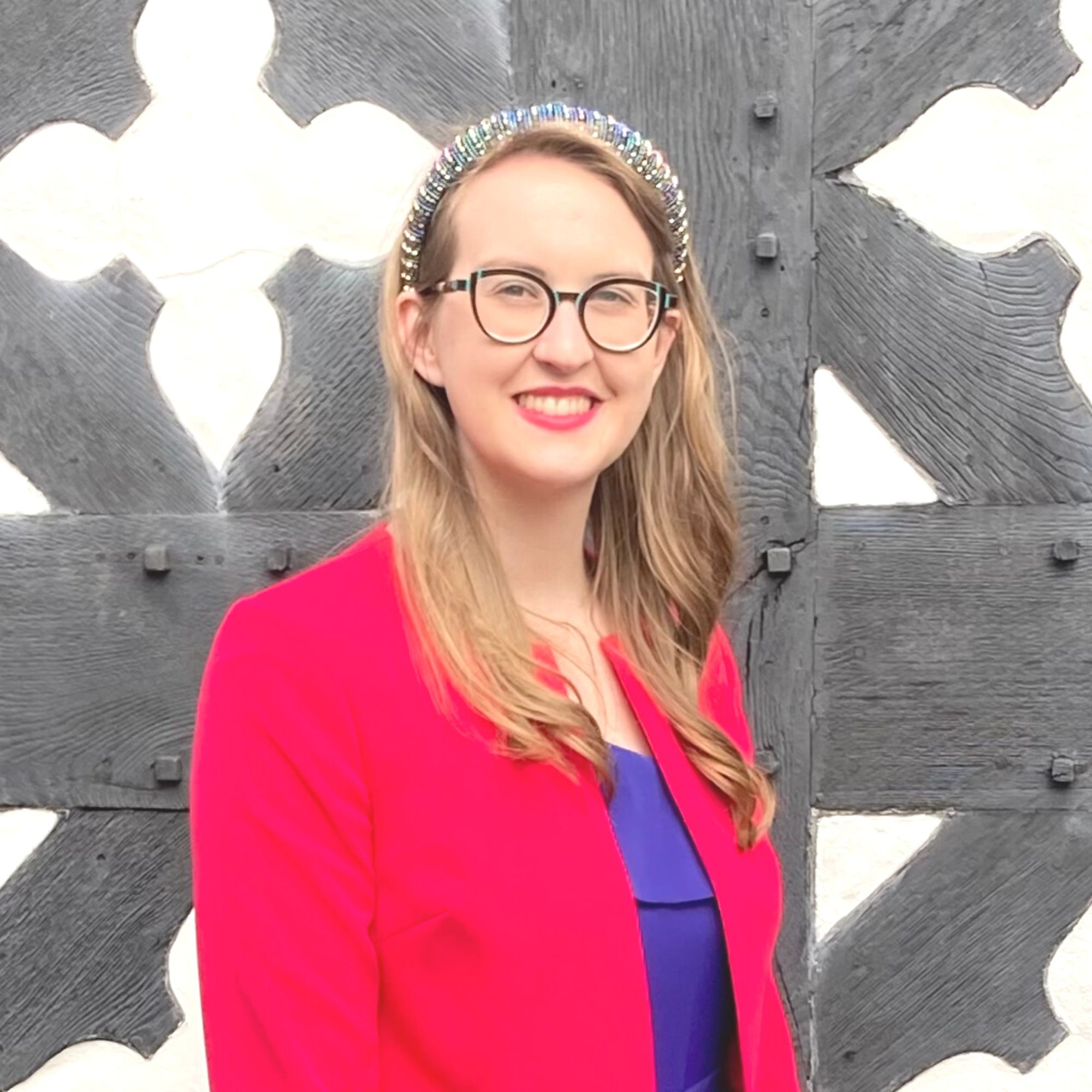
With so many period front door ideas, it can be hard to decided on the right design for your home.
However, there is an art to choosing the right front door ideas to complement your home. Not only must you take into account its size, shape and security credentials, but also suitability to the era and look of your property. Visible to all, a front door makes an important first impression, setting expectations for the interior beyond.
Choosing the best period front door ideas
Period front door ideas need to not only complement your front garden ideas, but also work with your hallway ideas that lie on the other side of the door.
When seeking inspiration for the design, research doors suitable for the age and architectural style of your home – for example, a door that suits a Victorian cottage will not be the same as a style for a Victorian townhouse. The same applies when looking for traditional windows for period homes too.
Look to neighbouring properties, too, especially if the original doors are still intact, as this will help to guide you as to which designs and shapes work best.
1. Choose the right paint colour
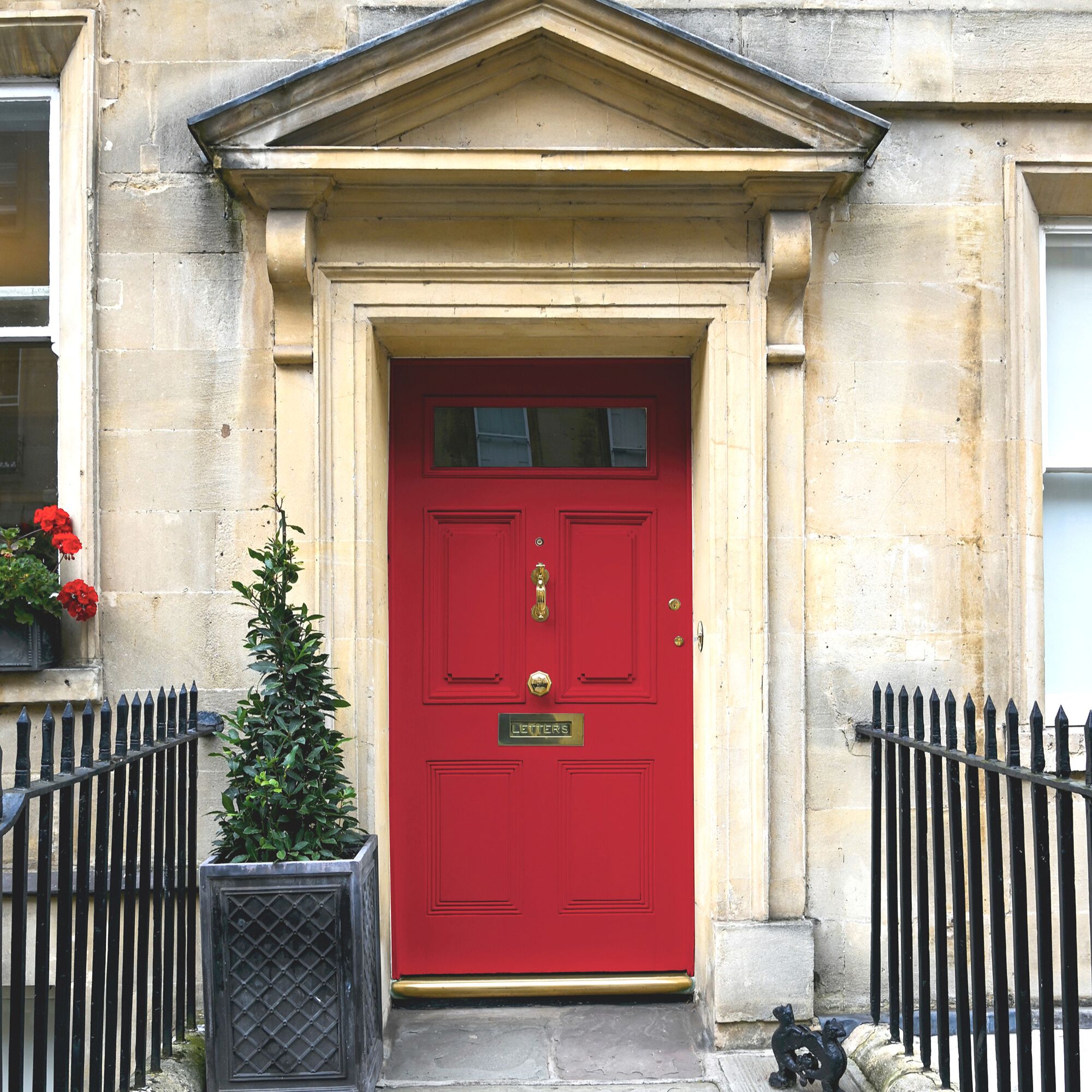
When choosing a new colour for your period front door ideas, start by looking at your neighbours’ homes – your choice should ideally complement the existing palette. Also consider your front garden: a house with only a path or driveway can take a bold hue, as the door will be the star of the show; however, an abundant cottage garden brimming with blooms will suit a more muted pastel, neutral or subtle- grained door finish.
If you are planning to paint your front door be sure that you know how to prepare the wood to ensure an aesthetic and durable finish. This door is in Dorothy’s Slippers exterior eggshell at Victory Colours.
2. Carefully consider materials
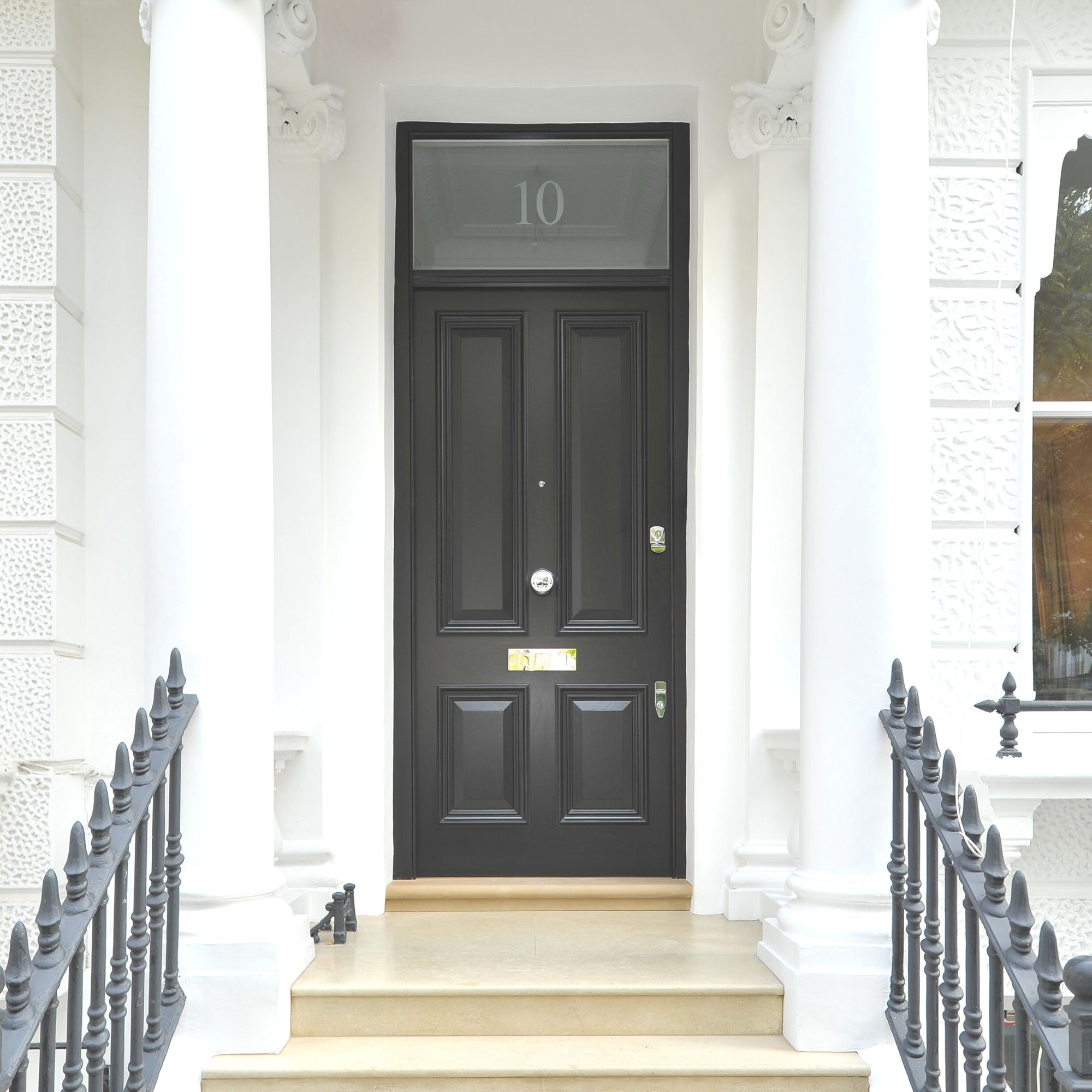
Materials have a significant impact on the aesthetics, durability and security of your period front door ideas. Solid wood is a highly aesthetic and secure choice but requires regular maintenance to ensure its durability. For this reason, modified timbers, such as Accoya are becoming increasingly popular.
‘Accoya is designed not to visibly swell, shrink, or distort and is also extremely stable meaning it requires minimal ongoing maintenance. Accoya also has naturally insulating properties, helping to keep down energy bills,’ says Richard Dollar, Managing Director at The Sash Window Workshop.
3. Embrace a classic medieval style for a Tudor cottage
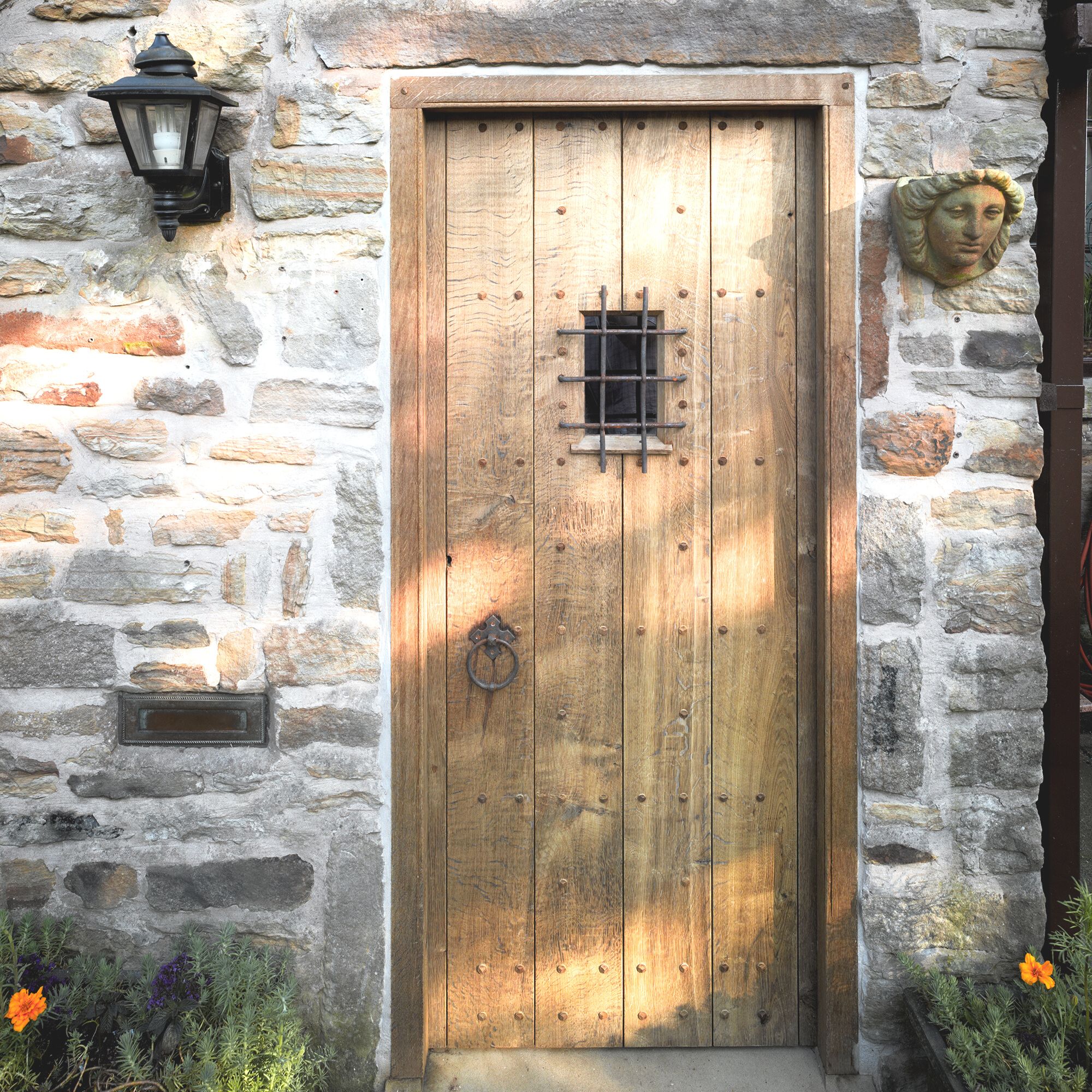
For period front door ideas dating from the medieval period, handpainted solid wood designs were popular. Traditionally made from hardwood such as oak or sapele, they feature a plank style and remained unpainted. These elegant doors were completed with hand-forged ironmongery.
4. For a more minimalist design consider regency
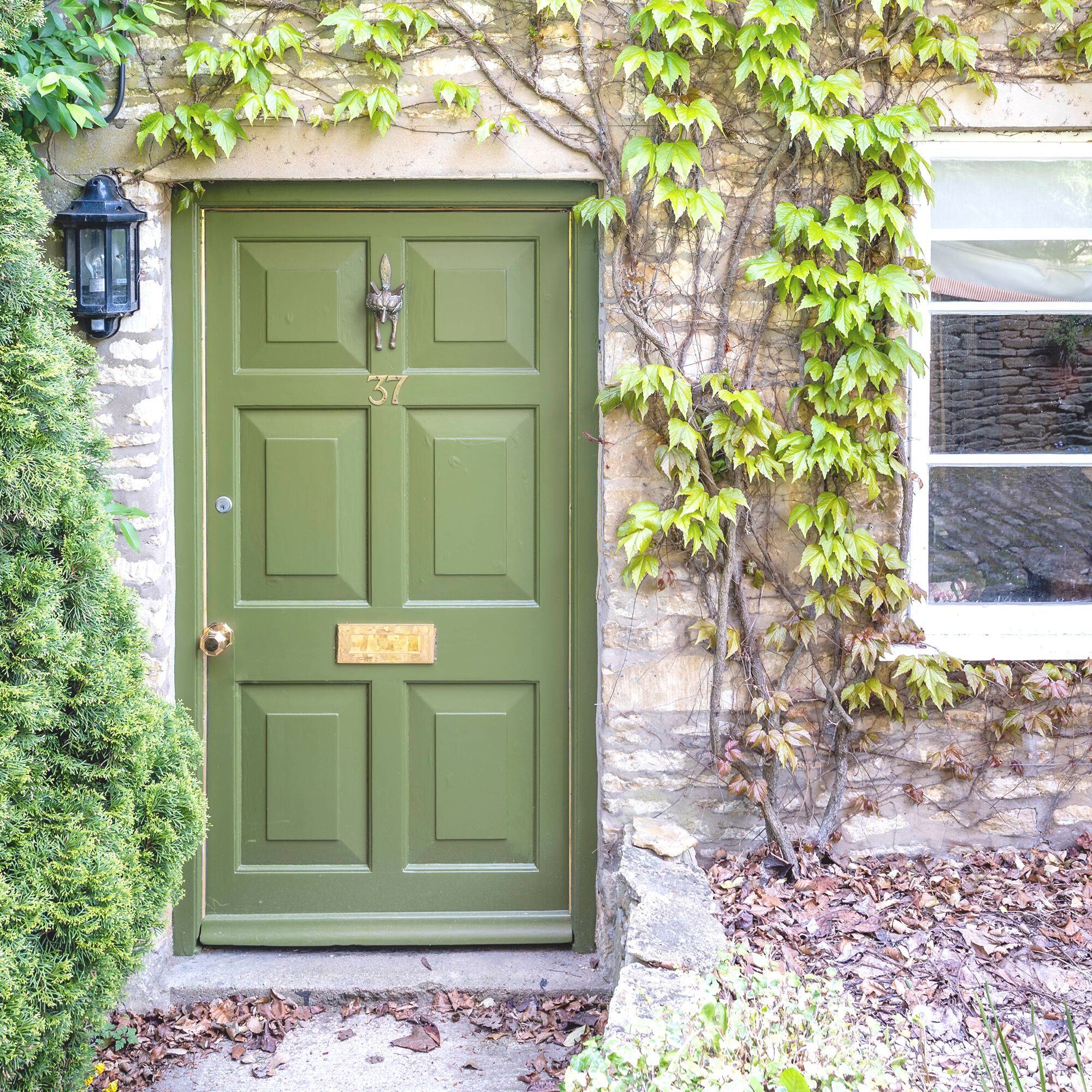
One of the more minimalist design eras, Regency period front door ideas are effortlessly sophisticated. A variant of Georgian design, Regency doors feature the same geometric panelling but blue shades of the previous era were traded for black or bronze-green shades with grained finishes to imitate expensive oak which made a striking statement against whitewashed homes. Gothic Revival styles also began to be used during this period.
5. For timeless style go for a Georgian-inspired front door
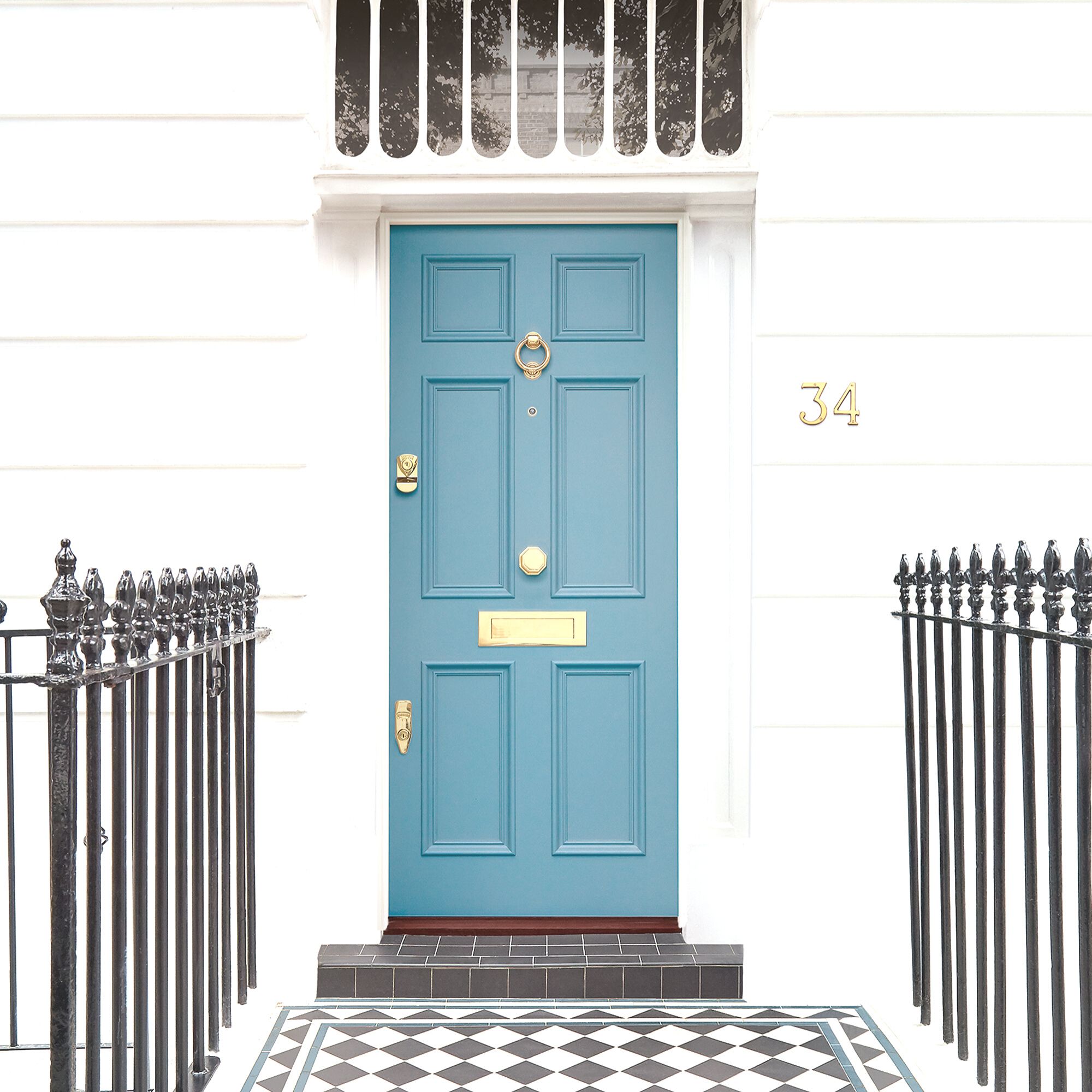
Instantly recognisable, the six-panelled Georgian-style door suits a wide range of homes – both Georgian and not.
‘On this particular home, the homeowners were keen to replicate the existing design of the original door and surround on their portico. With some minor tweaks to the Georgian portico panels to the left and right of the door, and altering the circular panelling detail to square, the door fits in beautifully with the property’s look and feel,’ says Ryan Schofield, managing director at Thames Valley Window Company.
6. Complement your home with a Victorian-style door
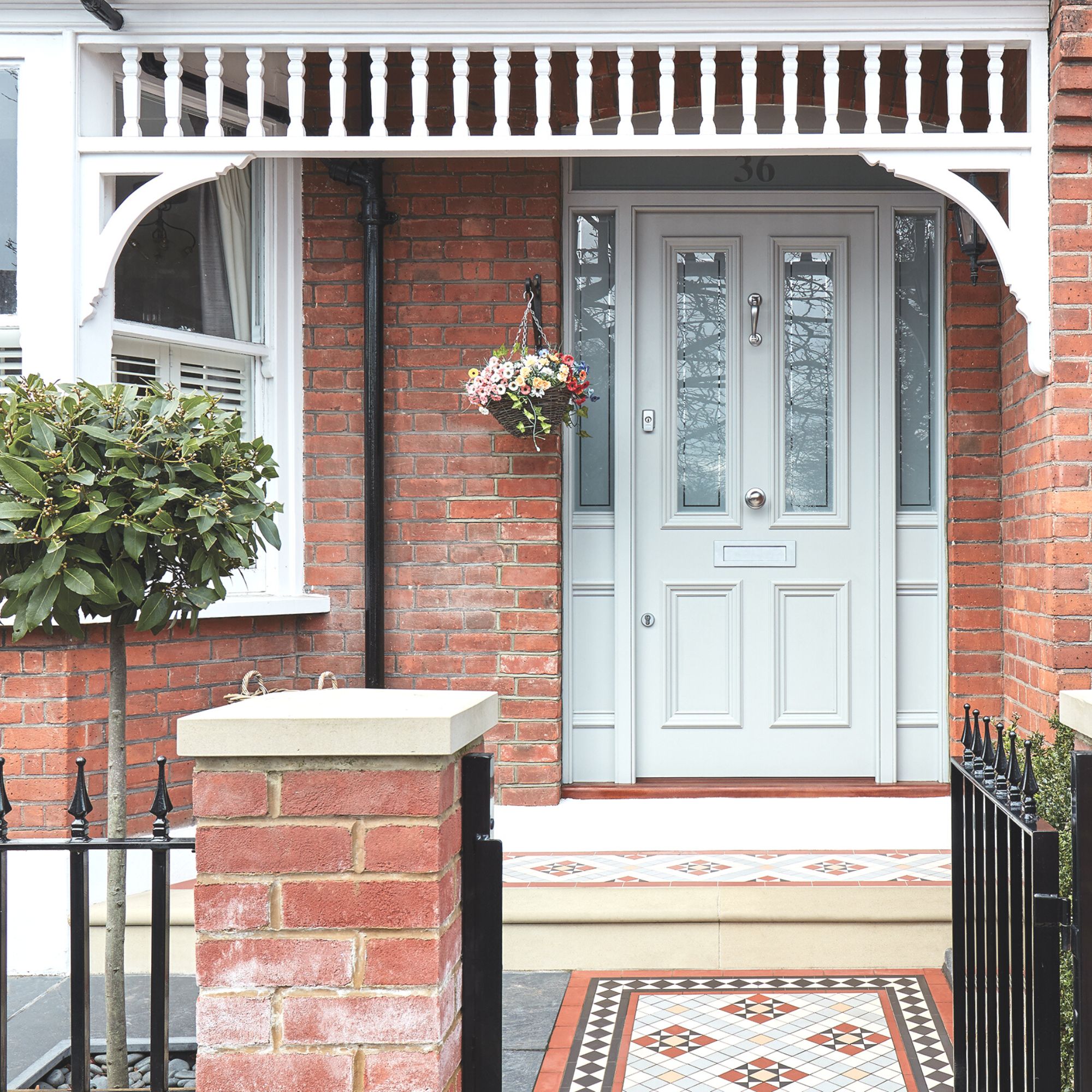
The four-panelled Victorian door suits a wide range of homes – whether Victorian or not. Capitalising on the increased affordability of glass, decorative glazing became a prominent feature, often with statement glass designs replacing the top two panels. This Victorian-style door from London Door Company in Dove Grey features bespoke glazing.
7. Make a statement with an Edwardian door
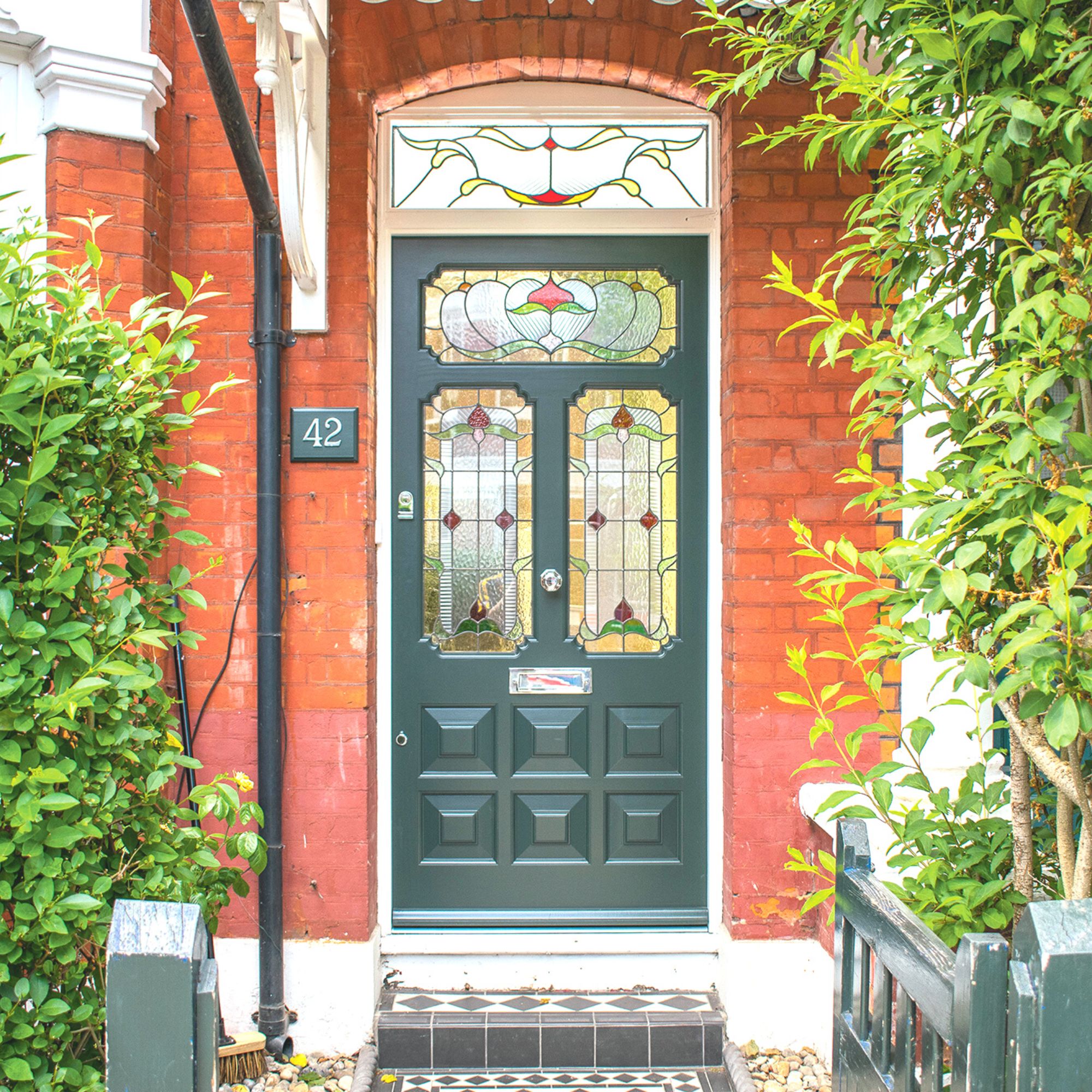
Period front door ideas inspired by the Edwardian doors are defined by grandeur. Building on the ornate Victorian designs, the entry to the home was broadened with sidelights and stained glass panels creating a bold statement.
Created as a replica of a traditional design, ‘this door is designed to be sympathetic to the Edwardian architecture of the local area, with stained glass embracing traditional textures and beautiful colours,’ explains Andrew Beale, managing director at Cotswood Doors.
8. Add stable-style front doors to a cottage
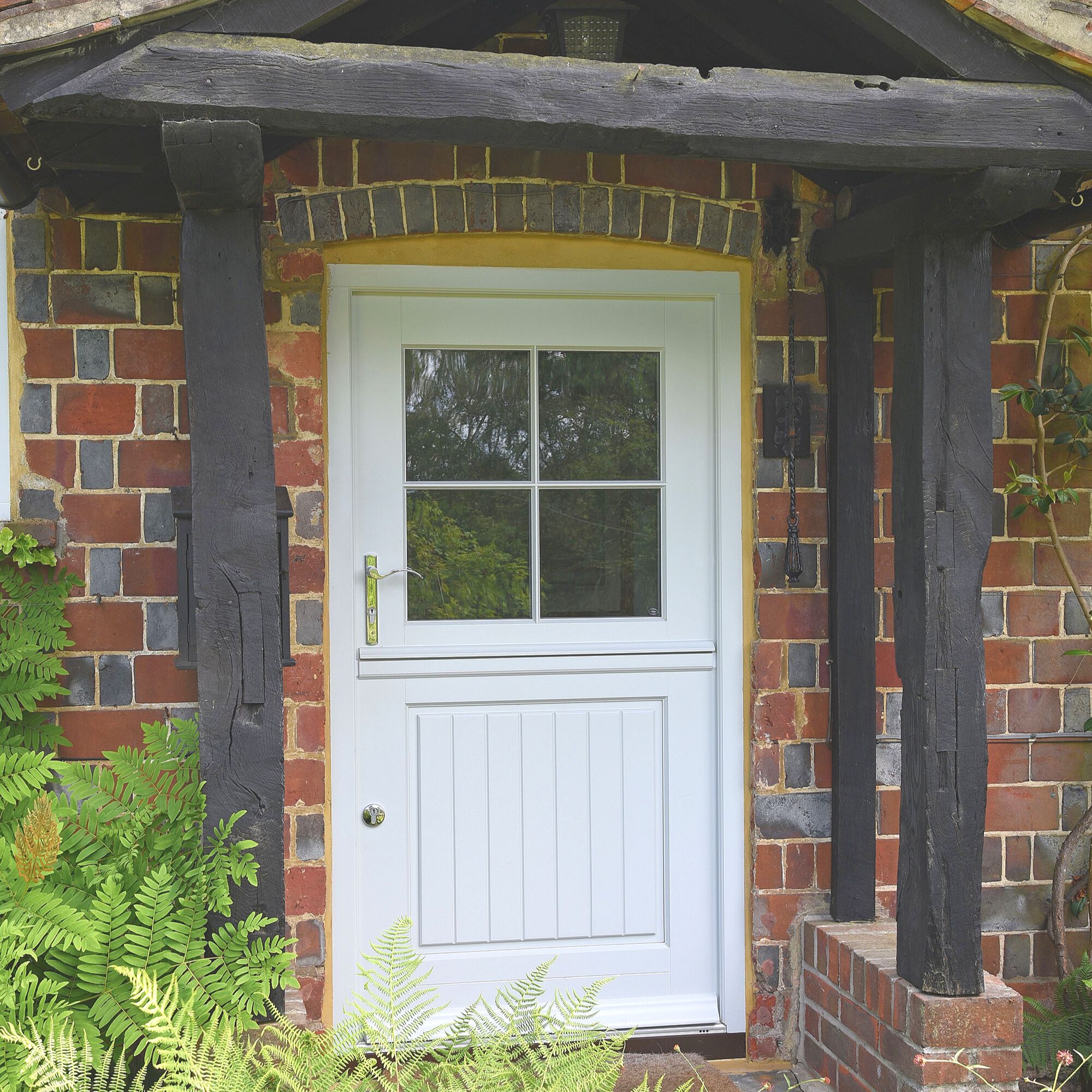
Perfect for rural properties, stable doors are a flexible choice of period front door ideas that suits busy households. ‘The timeless style of stable doors is perfectly suited to properties in the countryside, ideal for households with young children and/or pets offering the option to open the top half of the door to receive parcels while still adding charm and beauty to your home,’ says Charles Fox, director at Timber Windows.
9. Add colour and pattern with an 20th-century front door
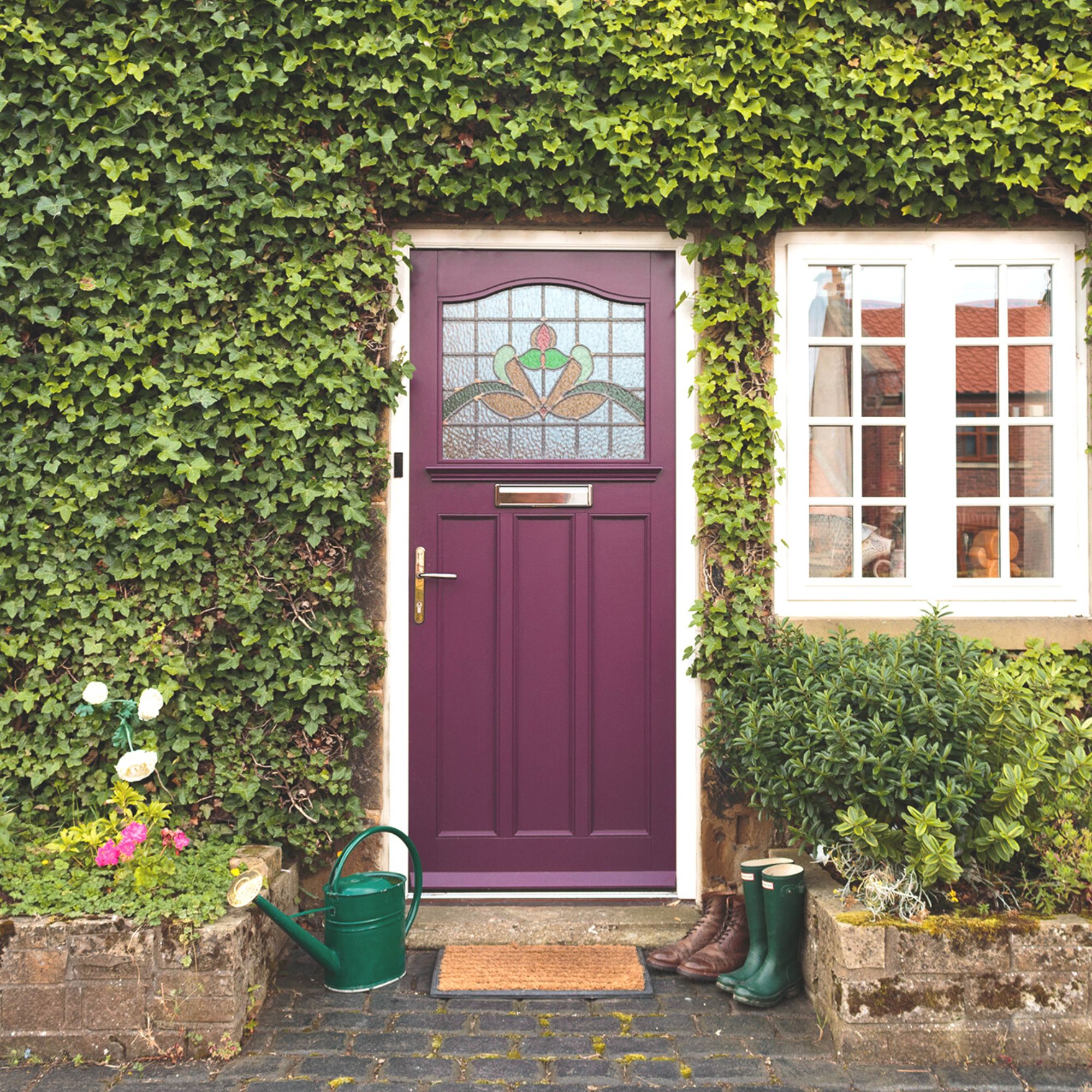
The early part of the 20th century saw the return of door glazing; however, the designs were more modest than those of previous eras. One-over-three doors were popular – with a single top panel, usually glass, over three panels in the bottom two-thirds of the door. Today, this style is often painted in vibrant shades. This Linthorpe design is from ERW Joinery.
FAQs
What are old front doors made of?
Old front doors are traditionally made from solid hardwoods such as oak and sapele. Prized for their beauty and durability, today, hardwoods are often chosen when the door is to be left unpainted so the natural tones and grains can shine through. However, they are quite costly and, as with all unmodified timbers, are prone to some movement from moisture.
What is the best material for a front door UK?
Accoya is the best material for a front door in the UK. An increasingly popular option, it is a modified, sustainably sourced softwood that is treated with acetic acid and heat to change the cell structure of the wood. The resulting product offers superior strength and stability, so doors won’t absorb water and warp or stick. It is also insect and fungi-resistant, with a 50-year anti-rot guarantee. Another strong, stable alternative is engineered timber, which consists of small sections of different wood pieces compressed and laminated together.
What are most house front doors made of?
Most house front doors are made of uPVC. The main alternative to wood is uPVC, which is built around a steel frame. It’s not an authentic choice, but better quality designs are hard-wearing, maintenance-free and can look very convincing, so if you go down this route, choose with care. Cheaper uPVC doors will detract from your home’s character and should be avoided. Another man-made option is GRP (glass-reinforced plastic), which can be finished with a more realistic woodgrain.
How much should you spend on a front door?
The advertised cost of an off-the-shelf front door doesn’t usually include installation, delivery, hinges, disposal of the old door and sometimes VAT. This means a door marked as £500 could end up costing double. Doors with side windows and panels tend to cost more to be fitted. Try to get at least three quotes from different suppliers for comparison.
For many period homes, the only option will be to have a bespoke door, due to the non-standard opening size and shape, and this will inevitably add to the cost, with prices starting at £2,000.
How secure is a front door?
Your door’s ability to withstand intruders is of vital importance, so investigate its security credentials. The Police-approved Secured by Design scheme is a widely recognised mark of quality, but handmade wooden front doors are unlikely to be accredited, so you need to discuss security with the manufacturer.
Invest in a five-lever mortice deadlock that meets BS3621 standards, and consider adding a rim latch, a door chain and, on solid doors, a viewer – or even better a wireless smart doorbell such as Ring, which allows you to see who’s at the door via an app.
Glazing is a vulnerable area, so opt for laminated glass in plain areas as, when shattered, the fragments will adhere to an inner vinyl layer. It also improves sound insulation, making it ideal for busy roads.
What is the maintenance of timber door?
All timber doors require periodic maintenance. If you find any raised woodgrain, discolouration, peeling or cracking, then you’ll need to refinish it and possibly carry out minor repairs. Swollen wood may need sanding or trimming. Also check the ironmongery is in good order – a multipurpose lubricator should ease stiff locks. If more extensive renovation is required, call in an expert craftsperson, who can also upgrade draughtproofing measures.
What does a Victorian front door look like?
Victorian doors were often four-panelled and used glazed panels, sometimes with stained glass, and plain over-lights. They were usually painted green or grained, but other colours were deep red, brown and blue. Gothic elements such as arches may be seen.
What did Edwardian doors look like?
Edwardian doors are often quite ornate, with decorative porches featuring white woodwork with fretwork patterns. Stained glass and leaded lights were commonly used, with glass decorated with floral motifs often referencing the Art Nouveau movement.
What is a Georgian front door?
Georgian front doors are simple and classical in style and often feature six fielded panels. Originally they were painted in dark colours. Fanlights are a distinctive feature of the period, used to let in light; initially they were wooden and rectangular, later semicircular and featuring ornate metal or leadwork. The Gibbsian door surround was still popular in the earlier part of the period, with pedimented styles and columns in later years. Opt for elegant brass ironmongery.
What did front doors look like in 1920?
Front doors in 1920 typically featured a single-glazed upper panel and three vertical panels beneath. They were also often painted in bright colours.
Get the Ideal Home Newsletter
Sign up to our newsletter for style and decor inspiration, house makeovers, project advice and more.

Holly is one of Ideal Home’s content editors. Starting her career in 2018 as a feature writer and sub-editor for Period Living magazine, she has continued this role also adding regular features for Country Homes & Interiors and the Ideal Home website to her roster. Holly has a passion for traditional and country-inspired interiors – especially kitchen design – and is happiest when exploring the countryside and hills of the Lake District. A keen gardener, she is a strong believer that you can never have too many houseplants.
-
 Will a conservatory add value to your home and how can you maximise it?
Will a conservatory add value to your home and how can you maximise it?This is what the pros say
By Amy Reeves
-
 I’ve been looking for a new signature scent for my home and The White Company's new fragrance is the exact summer holiday smell I needed
I’ve been looking for a new signature scent for my home and The White Company's new fragrance is the exact summer holiday smell I neededSantorini smells fresh, summery and sophisticated
By Kezia Reynolds
-
 How to remove algae from garden walls in five steps – and the cleaning product experts rave about for tackling it fast
How to remove algae from garden walls in five steps – and the cleaning product experts rave about for tackling it fastExperts share their top tips for getting garden walls algae-free
By Katie Sims
-
 How to maintain your roof - everything you need to know
How to maintain your roof - everything you need to knowEnsure you know how to maintain your roof from spotting problems and DIY fixes to when to seek professional assistance
By Holly Reaney
-
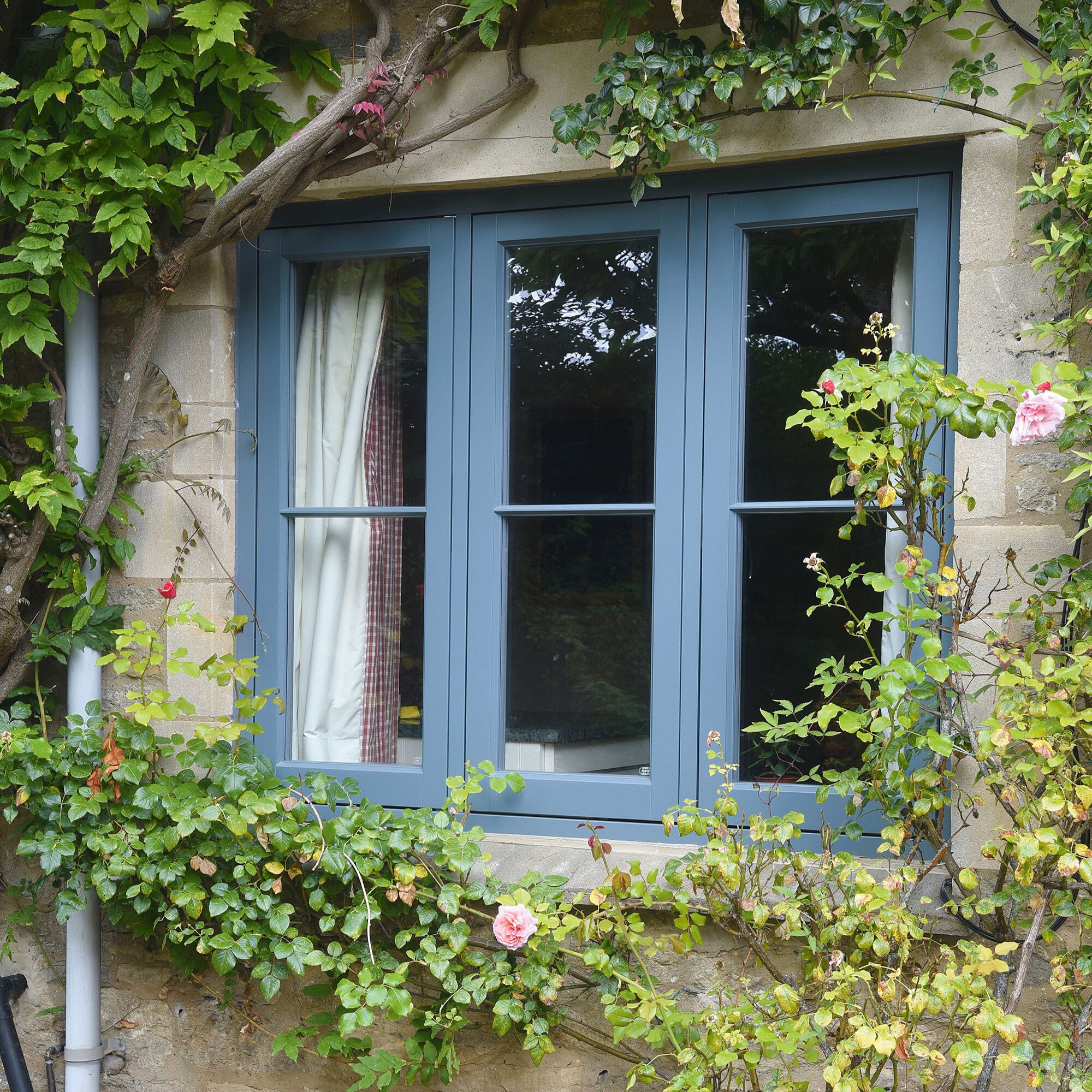 How to choose traditional windows for period homes
How to choose traditional windows for period homesTraditional windows play a vital role in both a property’s aesthetics and its energy efficiency, so choose the style carefully
By Holly Reaney
-
 This small bathroom renovation went from derelict to delightful
This small bathroom renovation went from derelict to delightfulJoanne Tudda and Michael Graveston optimised space to create a show-stopping Art Deco bathroom
By Holly Reaney